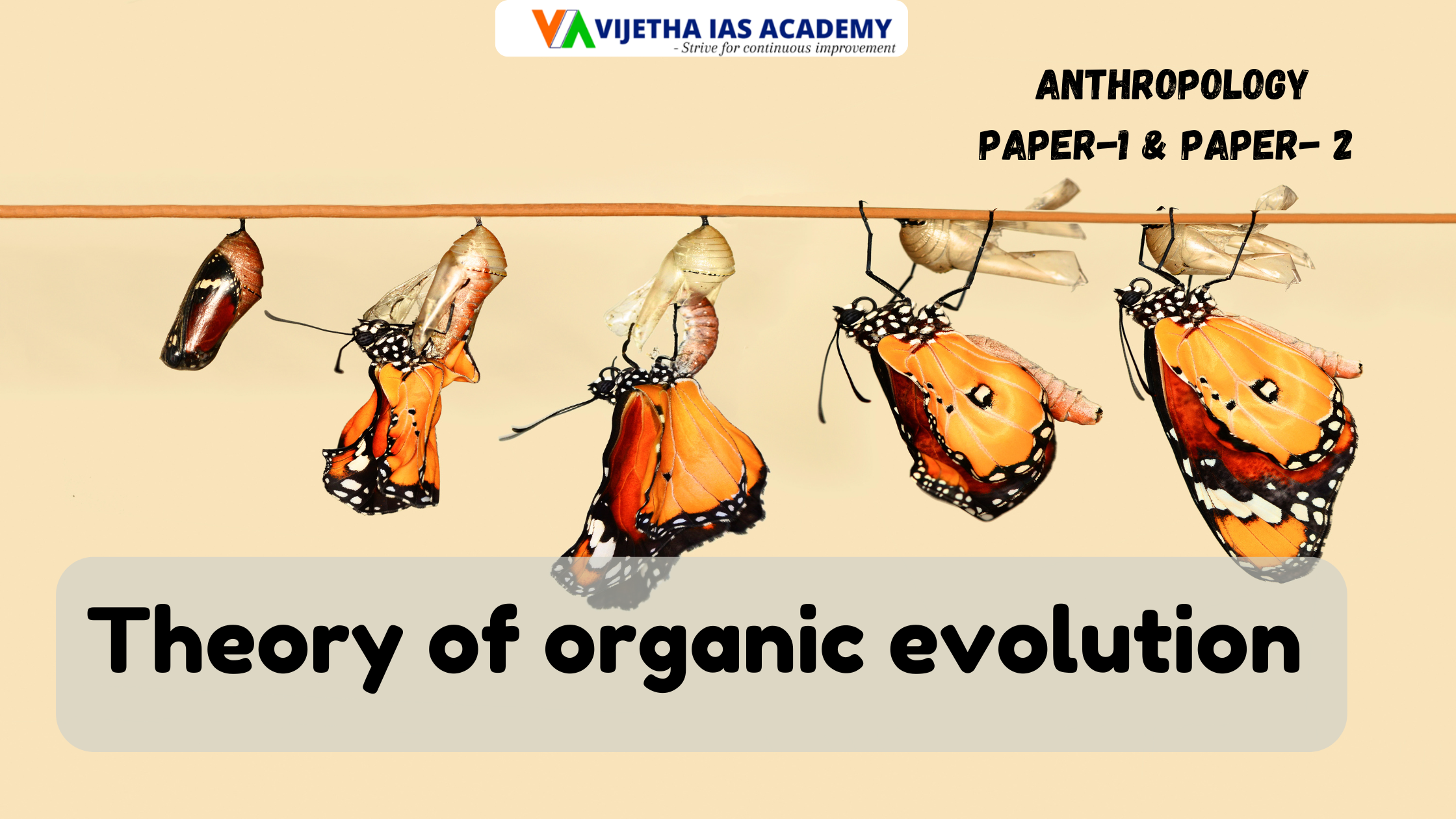Theory of organic evolution? Explained for UPSC | Vijetha IAS Academy
Theory of organic evolution? Explained for UPSC | Vijetha IAS Academy
-
Author : Vijetha IAS
-
Date : {{ formatDate("Fri Aug 30 2024 17:49:03 GMT+0530 (India Standard Time)") }}
-
Category : Daily article,

Introduction
The theory of organic evolution is a fundamental concept in anthropology and biology, describing the process by which different species of organisms have developed and diversified from earlier forms during the history of the Earth. Organic evolution, primarily attributed to Charles Darwin's theory of natural selection, encompasses a range of mechanisms including mutation, genetic drift, and gene flow. It explains the continuity and change of life forms over geological time.
Main Body
1. Historical Background:
- The concept of evolution predates Darwin, with early thinkers like Lamarck proposing ideas of inheritance of acquired characteristics.
- Darwin, through his observations during the voyage of the HMS Beagle and subsequent studies, formulated the theory of natural selection, which he published in "On the Origin of Species" (1859).
- Darwin's theory was revolutionary as it provided a naturalistic explanation for the diversity of life and the adaptation of organisms to their environments.
2. Mechanisms of Organic Evolution:
- Natural Selection: The process whereby organisms better adapted to their environment tend to survive and produce more offspring. This is the cornerstone of Darwin's theory and explains the adaptation of species over time.
- Mutation: Genetic mutations introduce variation within a population. Some mutations may be advantageous, leading to evolutionary changes over generations.
- Genetic Drift: Random changes in allele frequencies within a population, which can lead to significant evolutionary changes, especially in small populations.
- Gene Flow: The transfer of genetic material between populations, which can introduce new genes and traits, contributing to evolutionary change.
3. Evidence Supporting Organic Evolution:
- Fossil Record: Provides chronological evidence of past life forms and their progression over time, showing transitional forms that support the theory of evolution.
- Comparative Anatomy: The study of similarities and differences in the anatomy of different species supports common ancestry. Homologous structures, for example, suggest evolutionary relationships.
- Embryology: Early stages of development in different species show remarkable similarities, suggesting a common evolutionary origin.
- Molecular Biology: Genetic studies reveal that DNA sequences are conserved across diverse species, indicating common ancestry and evolutionary links.
4. Modern Synthesis:
- The Modern Synthesis, or Neo-Darwinism, integrates Darwin's theory of natural selection with Mendelian genetics, forming a unified theory of evolution. It explains how genetic variation arises and is acted upon by natural selection.
5. Criticisms and Alternative Theories:
- While widely accepted, the theory of organic evolution has faced criticism, particularly from creationists who argue for a literal interpretation of religious texts.
- Alternative theories, such as punctuated equilibrium proposed by Eldredge and Gould, suggest that evolution occurs in rapid bursts followed by long periods of stability, rather than the gradual change proposed by Darwin.
Conclusion
The theory of organic evolution remains one of the most robust scientific theories, providing a comprehensive explanation for the diversity of life on Earth. It is supported by extensive evidence from various scientific fields, making it a cornerstone of modern anthropology and biology. While it has evolved with the integration of new scientific findings, the basic principles of natural selection and genetic variation continue to be central to our understanding of the biological world.
-1647944223018.png)